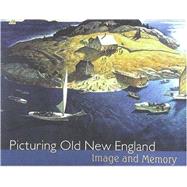Picturing Old New England : Image and Memory
, by Truettner, William H.; Stein, Roger B.; National Museum of American Art (U.S.)- ISBN: 9780937311486 | 0937311480
- Cover: Paperback
- Copyright: 4/1/1999
When we think of New England, we envision village greens surrounded by neat, white-framed houses; tall elms & church spires; country stores; Yankee farmers; sailing ships; rocky coastlines; brilliant autumn foliage. Despite the fact that there is a New England of cities, factories, & an increasingly diverse ethnic population, it is the Old New England that Americans have always treasured, finding in it a kind of "national memory bank." This beautiful book examines images of Old New England created between 1865 & 1945, demonstrating how these images encoded the values of age & tradition to a nation facing complex cultural issues during the period. The book begins with an introduction by Dona Brown & Stephen Nissenbaum that provides a historical background to the era. Then William Truettner, Roger Stein, & Bruce Robertson turn more directly to New England images & discuss a variety of artistic efforts to historicize the past. They show that paintings of the Revolutionary War, of harvest scenes, or of genteel old New England towns served, for example, to provide reassurance to urban dwellers after the Civil War, to counteract the effects of modernism, & to encourage a sense of community during the Depression. They also examine paintings of coastal New England & favorite haunts of tourists & artists such as Winslow Homer & Marsden Hartley. The many images of Old New England, say the authors, represent shared cultural beliefs-ways of seeing the present in terms of a mythical past.







